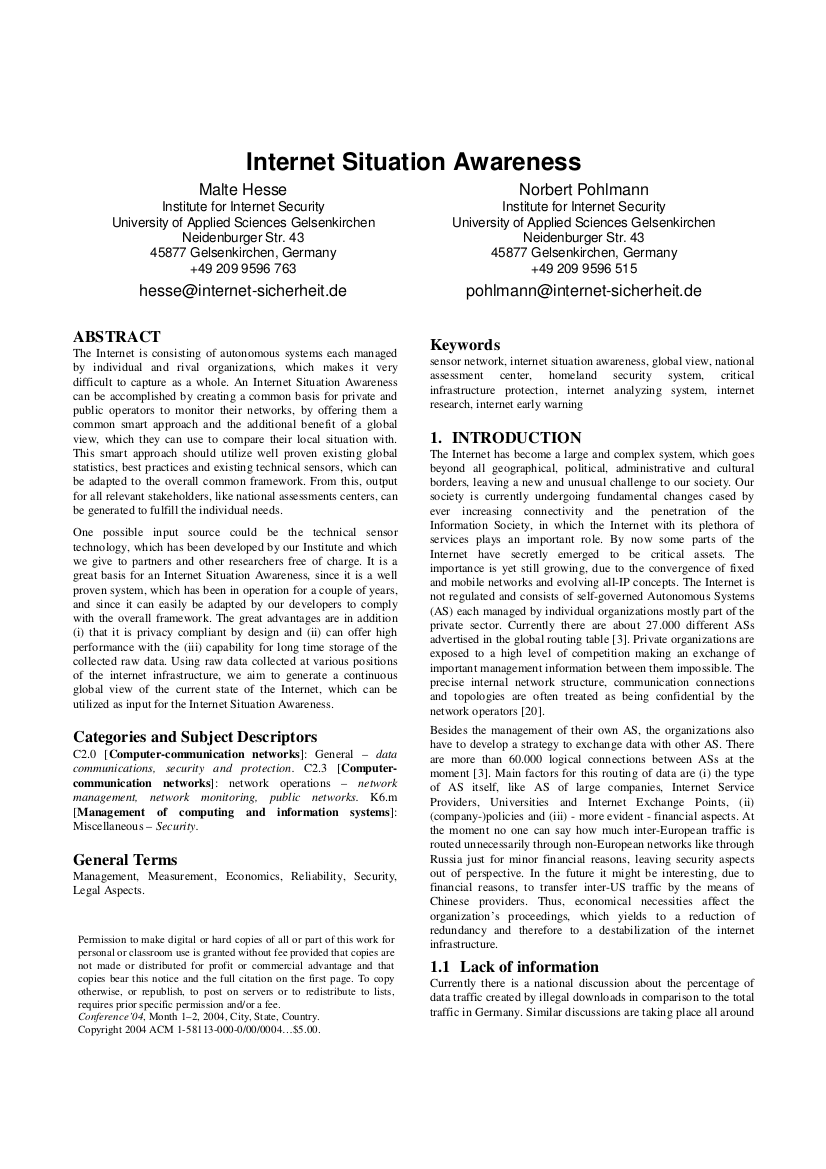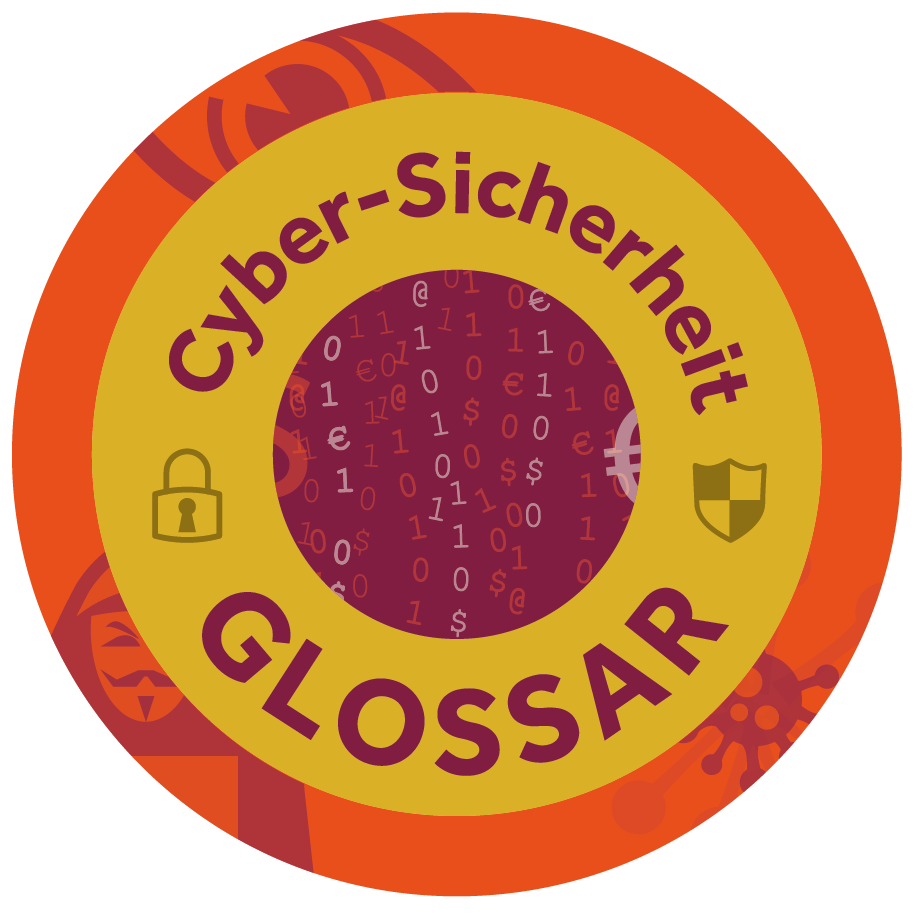M. Hesse, N. Pohlmann:,
“Internet Situation Awareness”.
In Proceedings of the eCrime Researchers Summit,
ISBN: 978-1-4244-2969-1/08,
IEEE,
USA 2008 The Internet is consisting of autonomous systems each managed by individual and rival organizations, which makes it very difficult to capture as a whole. An Internet Situation Awareness can be accomplished by creating a common basis for private and public operators to monitor their networks, by offering them a common smart approach and the additional benefit of a global view, which they can use to compare their local situation with.
This smart approach should utilize well proven existing global statistics, best practices and existing technical sensors, which can be adapted to the overall common framework. From this, output for all relevant stakeholders, like national assessments centers, can be generated to fulfill the individual needs.
One possible input source could be the technical sensor technology, which has been developed by our Institute and which we give to partners and other researchers free of charge. It is a great basis for an Internet Situation Awareness, since it is a well proven system, which has been in operation for a couple of years, and since it can easily be adapted by our developers to comply with the overall framework. The great advantages are in addition
(i) that it is privacy compliant by design and (ii) can offer high performance with the (iii) capability for long time storage of the collected raw data. Using raw data collected at various positions of the internet infrastructure, we aim to generate a continuous global view of the current state of the Internet, which can be utilized as input for the Internet Situation Awareness.
The Internet has become a large and complex system, which goes beyond all geographical, political, administrative and cultural borders, leaving a new and unusual challenge to our society. Our society is currently undergoing fundamental changes cased by ever increasing connectivity and the penetration of the Information Society, in which the Internet with its plethora of services plays an important role. By now some parts of the
Internet have secretly emerged to be critical assets. The importance is yet still growing, due to the convergence of fixed and mobile networks and evolving all-IP concepts. The Internet is not regulated and consists of self-governed Autonomous Systems (AS) each managed by individual organizations mostly part of the private sector. Currently there are about 27.000 different ASs advertised in the global routing table. Private organizations are exposed to a high level of competition making an exchange of important management information between them impossible. The precise internal network structure, communication connections
and topologies are often treaed as being confidential by the
network operator.
Weitere Informationen zum Thema “Cyber-Sicherheits-Frühwarn- und Lagebildsystem”:Artikel:
„Kommunikationslage im Blick – Gefahr erkannt, Gefahr gebannt“
„An ideal Internet Early Warning System“
„Ideales Internet-Frühwarnsystem”
„Internet Situation Awareness“
„Probe-based Internet Early Warning System”
„Internet Early Warning System: The Global View”
Vorträge:
“Internet Situation Awareness”
“Internet-Frühwarnsysteme“
Vorlesung: „Cyber-Sicherheit Frühwarn- und Lagebildsysteme“ Glossareintrag: “Cyber-Sicherheits-Frühwarn- und Lagebildsystem” Informationen über das Lehrbuch: „Cyber-Sicherheit“
kostenlos downloaden | 




